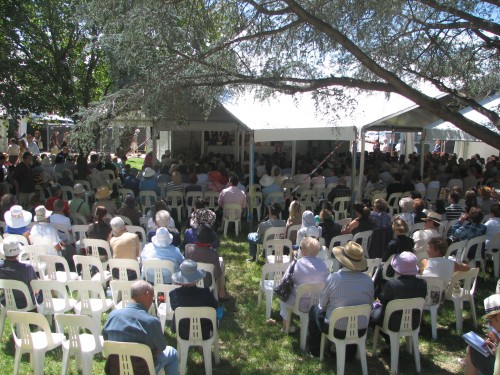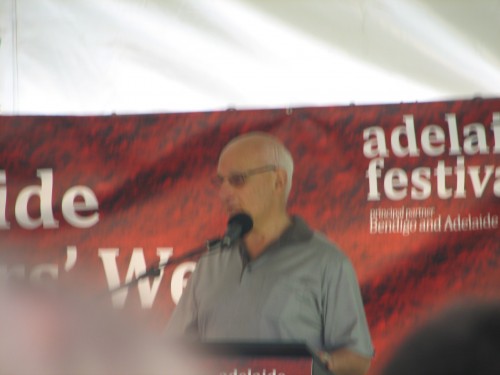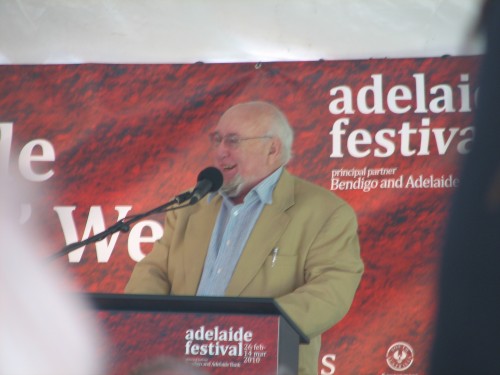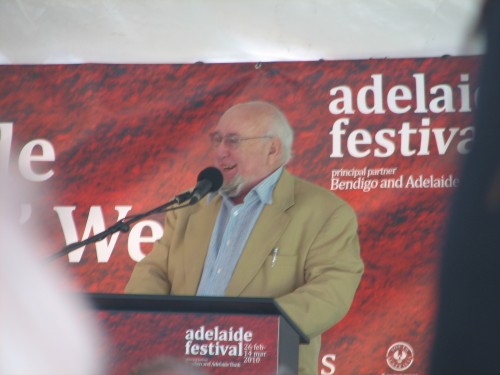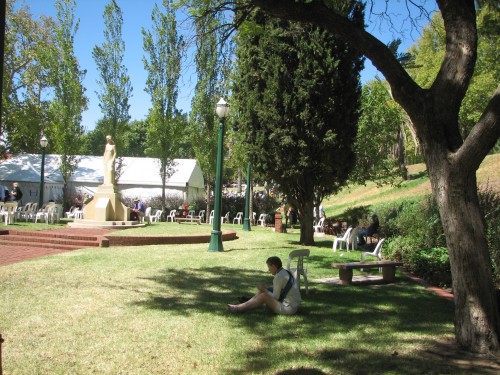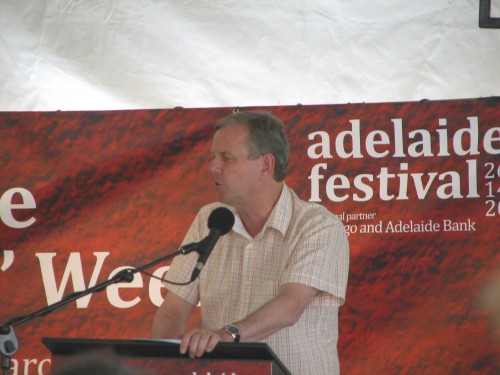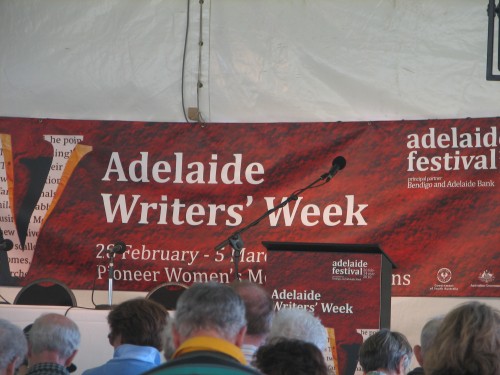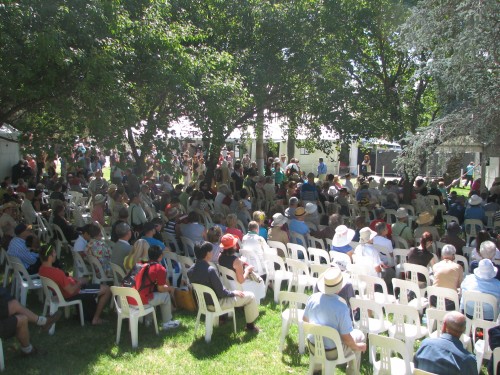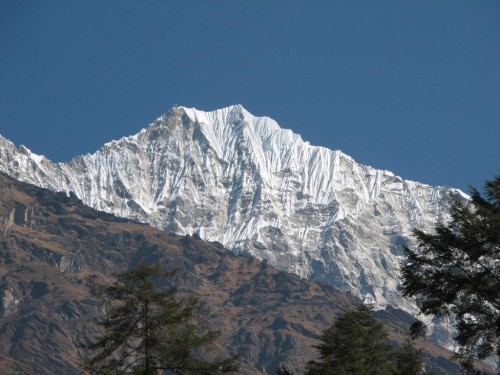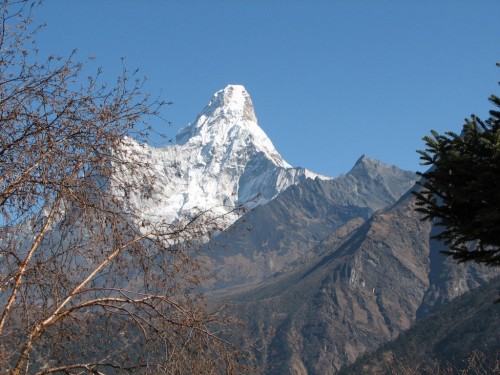Where are the writers for children?
Adelaide Writers’ Week 2010
Last week I attended three days of the week long Adelaide Writers Week. This biennial event is an integral part of the Adelaide Festival of Arts here in South Australia, one of the leading such festivals of its kind in the world. The list of guest speakers is often a who’s who of the writing world. This time was no exception and the impressive parade of talented writers throughout the week was very inspiring. I thoroughly enjoyed the experience.
But where were the writers for children?
They were conspicuous by their almost total absence.
Almost.
Only Markus Zusak could be said to be a writer for children – a debatable point as his audience is best described as Young Adult.
Australia has an impressive number of world class writers for children. They lead the world in their chosen field. They are acknowledged around the globe for their talent and many outsell their adult counterparts. Why, then are they totally ignored festival after festival?
Is this a case of literary snobbery on the part of the organising committee? Or ignorance?
A talented panel of writers
Adelaide Writers’ Week 2010
On the first morning of this year’s Adelaide Writers’ Week I was suddenly struck by the importance of the opening session. The panel on stage was a who’s who of Australian literature. Chair of the session was novelist David Malouf. The keynote speaker was novelist and historian Tom Keneally. The chairman of the Writers’ Week Advisory committee was South African born but now Adelaide resident, novelist and Nobel Prize for Literature winner John Coetzee. And finally there was renowned poet Tom Shapcott, who received the honour of the whole week being dedicated to him. His latest book of poetry was launched soon after the opening.
What a line up of talented, prominent writers!
It was inspiring to be in the company of such eminent men of letters.
Adelaide Writers’ Week March 2010
Last week I attended three days of the six day Adelaide Writers’ Week. This is an important and integral part of the Adelaide Festival of Arts held every two years. This festival attracts readers and writers from all over Australia, as well as a glittering gathering of international writers who come as guest speakers. Each day starts at 9:30am and runs until 6pm so it is quite a marathon effort for organisers and attendees as well. The sessions are all free (except for several evening sessions in the Town Hall). The sessions vary from panel discussions on writing, reading and literature through to book launches and meet-the-author opportunities.
Three large marquees are set up in the Pioneer Women’s Memorial Gardens a five minute walk from the CBD. The East Tent and the West Tent host sessions concurrently while the Book Tent is housed in another tent in between. This shop features books written only by authors present on the programme. All authors are available for book signings too.
On the first day of the festival there was a special session to announce the winners of the Festival Awards for Literature. This was done by the Premier of South Australia, Mike Rann. In all there are ten awards ranging from plays, children’s books, non-fiction to unpublished manuscripts. The cash awards are very generous and I applaud the state government for supporting our writers in this way. May it continue.
Further reading:
Adelaide Writers’ Week Day 1 Feb 2010
Today I attended the first day of the Adelaide Writers’ Week for this years’ Festival of Arts. This is an important and well attended part of the biennial Adelaide Festival of Arts. This time it’s the 50th Anniversary of the Festival and this week our premier announced that from 2012 it will become an annual event (a promise if he is elected again in a few weeks time!)
Adelaide Writers’ Week is regarded highly as the leading festival for writers in Australia, and one of the best in the world. A large group of international and Australian writers gather here every two years for a feast of talking about books, writing and literature.
I’ve only ever had the chance to attend once before and I am the poorer for this. (Because sessions are held during the day I couldn’t attend while I was still classroom teaching a few years back – in another life.)
Today the festivities were opened by none other than Tom Keneally (Schindler’s Ark), a very engaging and entertaining speaker. I didn’t realise he had such a clever wit and sharp humour.
Below I’ve included some photos of the setting in the Pioneer Women’s Memorial Gardens, a five minute walk from the heart of Adelaide.
I am planning to attend again tomorrow and later in the week. I’ll bring more reports as we go.
Review: Better than the Witch Doctor
Mary Cundy is an amazing woman. I have never met her, but after reading her book I feel as if I know her very well. I read this book as background research for my Master of Arts in Creative Writing thesis novel and exegesis essay. Although it did not have a direct bearing on my novel it was fascinating reading and it gave me a good feel for the setting of my novel. In fact, she lived for a time right where my novel is set.
In 1957 Mary Cundy, a young social worker in England, obeyed the call of God on her life and travelled to the mountainous country of Nepal. At this time very few outsiders had ever visited the country, let alone work there as a Christian missionary. For the next 33 years she served in remote parts of the country bringing medical help to the local people, even though she had no training in the field.
She lived with the people in their villages in very poor and demanding conditions. She quickly started a dispensary, helping over 100 very ill people daily. She graphically describes the daily lives of the village people and the struggles she had coping with their medical needs, physical needs as well as making small inroads into their spiritual needs. As a Christian missionary, however, her work was frequently hampered by officialdom (it was forbidden at the time to proselytise), suspicion (the local witch doctors were very powerful) and mistrust (she was often the first non-Nepali person locals had seen).
This is a very encouraging book. Not only is it a good read, I found it amazing how God can take ordinary people like Mary, put them in impossible situations, and produce extraordinary lives.
As far as I can determine, this book is sadly no longer in print.
Reference:
- Cundy, M 1994, Better than the witch doctor, Monarch Publications, Crowborough, East Sussex.
Further reading:
- My travels in Nepal – links to my travel blog, includes many photos taken in Nepal.
- Writing a novel – a series of articles about how I went about writing my novel for children set in Nepal.
